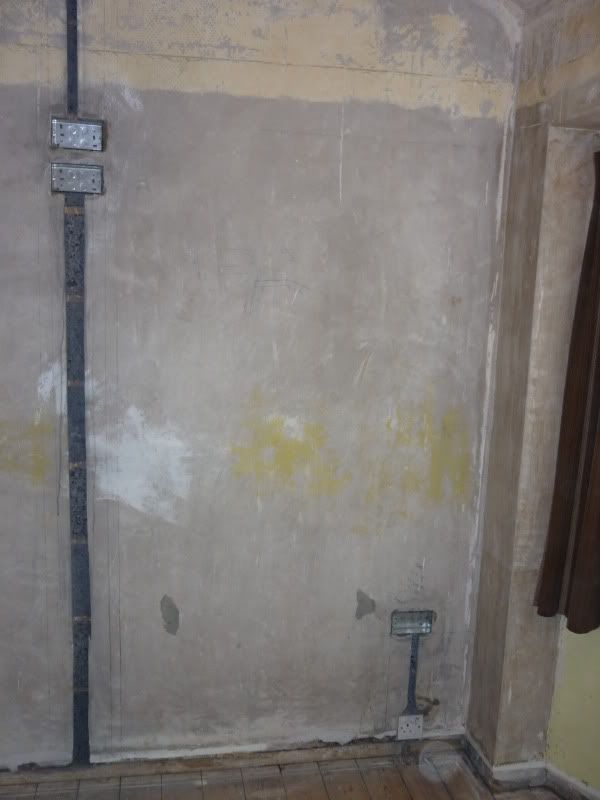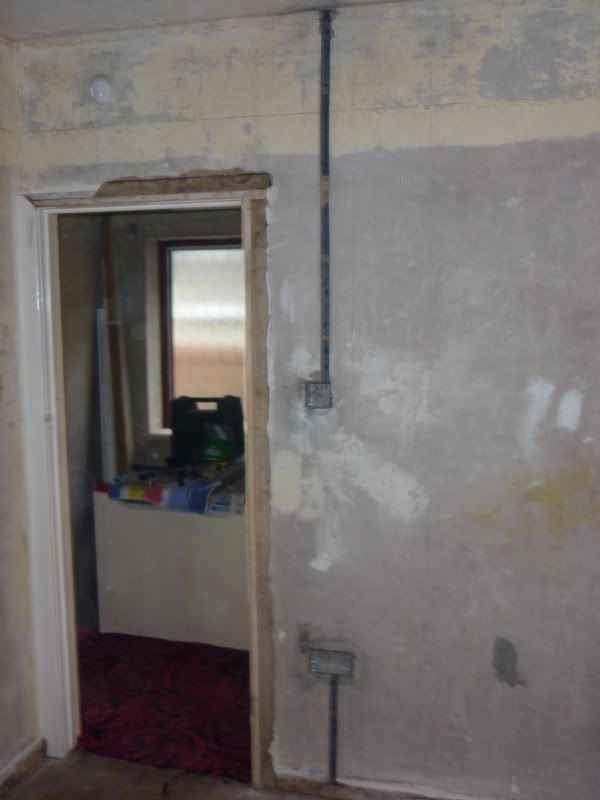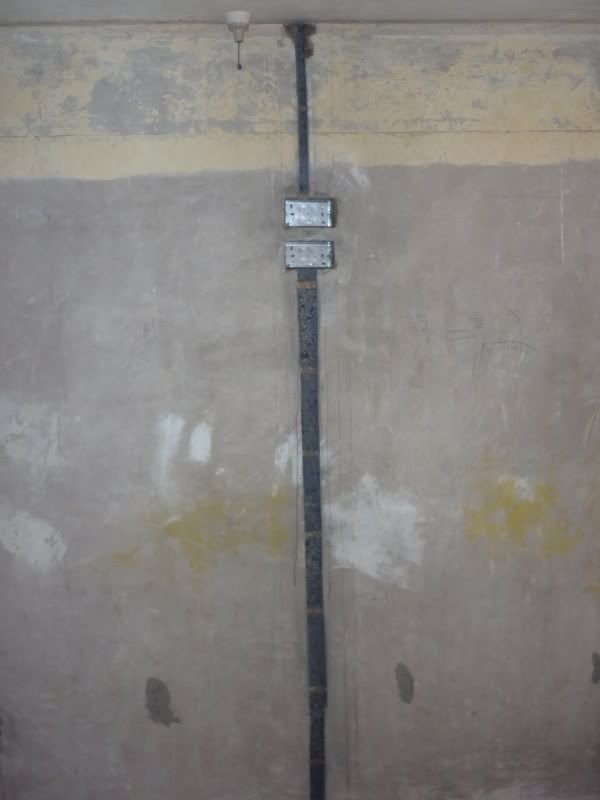Simon, thanks for all the advice, very helpful indeed.
I had a look at what is available. A lot of places recommend Cat6 for HDMI over Cat5e. They do boxes that connect either 1 or normally 2 Cat6/6 cables to a box that then provides HDMI to your TV. So I suppose the first question is:
Why use a box that needs 2 cat cables when you can get away with one?
I think I might go with Virgin Media, as I dont have to worry about a satelite dish, and cabling from the LNB. I must admit that I don't watch a huge amount of TV, but I do like the option of completing what I was watching downstairs in bed; and I am not fussed about having a second box at the moment really - rather the transmission of the main box to a few rooms. I can always watch Freeview if the other half wants to use the Sky/ V+ box anyway.
So this probably implicates running 3 Cat6 to each room, as I would like a spare for a PC/ intermnet TV in future.
The sat cable 1 and 2, and the aerial coax with FM and DAB implicates another 3 to each room. I think the sat 1 and 2 will remain redundant for the moment, but it will give me the option of connecting to if I need to in the future if we go with sky/ Freesat for example.
Thus I am up to 6 cables per room now, however the Freeview/ FM and DAB will essentially come from a loftbox type amplifier and splitter to each room, while the rest comes from the ground floor up, with the majority of it meeting under the floor of the landing.
Additionally, I need an IR repeater from each room on the front of each TV away from the AV boxes on the main TV to activate IR signals on the main AV equipment on the ground floor.
I think this is most of it, however another question I have is: can you then use an active HDMI splitter box for all my HDMI devices downstairs and put that through the single cat 5/6 carried HDMI to the other rooms... allowing me for instance to watch a DVD or use my Playatation upstairs if others are watching the TV in the main living room?
-or am I stuck with the single HDMI source per 2 cat5/6 cables.... in which case I will mount a small DVD player to the secondary TVs where needed.
The last question I have is that with a standard 20mb cable broadband connection comming in, am I going to get any bandwith limitations running all these devices from all these network cables, as I know that if say 2 PCs are using the internet, will I still be able to use my Virgin HD tv picture at peak use times, or will I run into problems with drop-outs etc?
I can't but think that internet TV is just around the corner - making all of this other stuff redundant other than a hard drive PVR to play recorded TV... it seems logical that SKY and Virgin can adopt a Netflix service to an internet capable TV... which greatly simplfies things as it will meed only one Cat cable per room then... but for now I will proceed with the full installation.
Since my house is being totally renovated at the moment, I have decided to install one 100 x 100mm duct to carry all these cables from the ground up to 1st, and then ill chase the coax for freeview fm and DAB into one of the walls coming down from the loft.
Here is a picture of my bedroom-to-be with the chasing for the wall mounted TV... note that atypically I am taking power for the TV from the loft ring for this TV, as the floor run is being taken up by a larger mini-trunking to accept all those AV and Cat cables as described... This is an internal wall, do I didn;t want to put a double chase going down to the skirting here, as I wanted to also avoid and weakening, having 2 x 2g boxes next to eachother, and also any interferance to AV from the mains.



Lastly, on a separate note if anyone else is cutting and chasing their walls, I can thoroughly recommend the Armeg box cutting kit for cutting in 1 and 2 g boxex, with a decent chasing machine and then knock the middle out with an SDS drill on hammer with a chisel in it. The Armeg box kit has easily saved me abut 3-4 days work, and the boxes are extremely neatly cut.
I think the last thing to mention is that I am getting my roof replaced as well, so I will be putting a new aerial on the chimney stack... I would like one that I can mount a dish to as well as the FM/ DAB aerial, that will pick up a good signal - is there any standard I should look at - I will be researching this today.
I had a look at what is available. A lot of places recommend Cat6 for HDMI over Cat5e. They do boxes that connect either 1 or normally 2 Cat6/6 cables to a box that then provides HDMI to your TV. So I suppose the first question is:
Why use a box that needs 2 cat cables when you can get away with one?
I think I might go with Virgin Media, as I dont have to worry about a satelite dish, and cabling from the LNB. I must admit that I don't watch a huge amount of TV, but I do like the option of completing what I was watching downstairs in bed; and I am not fussed about having a second box at the moment really - rather the transmission of the main box to a few rooms. I can always watch Freeview if the other half wants to use the Sky/ V+ box anyway.
So this probably implicates running 3 Cat6 to each room, as I would like a spare for a PC/ intermnet TV in future.
The sat cable 1 and 2, and the aerial coax with FM and DAB implicates another 3 to each room. I think the sat 1 and 2 will remain redundant for the moment, but it will give me the option of connecting to if I need to in the future if we go with sky/ Freesat for example.
Thus I am up to 6 cables per room now, however the Freeview/ FM and DAB will essentially come from a loftbox type amplifier and splitter to each room, while the rest comes from the ground floor up, with the majority of it meeting under the floor of the landing.
Additionally, I need an IR repeater from each room on the front of each TV away from the AV boxes on the main TV to activate IR signals on the main AV equipment on the ground floor.
I think this is most of it, however another question I have is: can you then use an active HDMI splitter box for all my HDMI devices downstairs and put that through the single cat 5/6 carried HDMI to the other rooms... allowing me for instance to watch a DVD or use my Playatation upstairs if others are watching the TV in the main living room?
-or am I stuck with the single HDMI source per 2 cat5/6 cables.... in which case I will mount a small DVD player to the secondary TVs where needed.
The last question I have is that with a standard 20mb cable broadband connection comming in, am I going to get any bandwith limitations running all these devices from all these network cables, as I know that if say 2 PCs are using the internet, will I still be able to use my Virgin HD tv picture at peak use times, or will I run into problems with drop-outs etc?
I can't but think that internet TV is just around the corner - making all of this other stuff redundant other than a hard drive PVR to play recorded TV... it seems logical that SKY and Virgin can adopt a Netflix service to an internet capable TV... which greatly simplfies things as it will meed only one Cat cable per room then... but for now I will proceed with the full installation.
Since my house is being totally renovated at the moment, I have decided to install one 100 x 100mm duct to carry all these cables from the ground up to 1st, and then ill chase the coax for freeview fm and DAB into one of the walls coming down from the loft.
Here is a picture of my bedroom-to-be with the chasing for the wall mounted TV... note that atypically I am taking power for the TV from the loft ring for this TV, as the floor run is being taken up by a larger mini-trunking to accept all those AV and Cat cables as described... This is an internal wall, do I didn;t want to put a double chase going down to the skirting here, as I wanted to also avoid and weakening, having 2 x 2g boxes next to eachother, and also any interferance to AV from the mains.



Lastly, on a separate note if anyone else is cutting and chasing their walls, I can thoroughly recommend the Armeg box cutting kit for cutting in 1 and 2 g boxex, with a decent chasing machine and then knock the middle out with an SDS drill on hammer with a chisel in it. The Armeg box kit has easily saved me abut 3-4 days work, and the boxes are extremely neatly cut.
I think the last thing to mention is that I am getting my roof replaced as well, so I will be putting a new aerial on the chimney stack... I would like one that I can mount a dish to as well as the FM/ DAB aerial, that will pick up a good signal - is there any standard I should look at - I will be researching this today.

